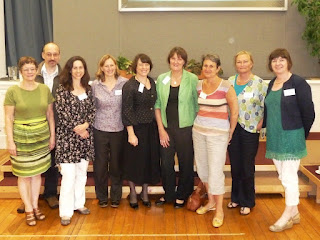The following paper has been accepted for publication this week:
Hambly, H., Wren, Y., McLeod, S., & Roulstone, S. (2012, in press May). The influence of bilingualism on speech production: A systematic review.
International Journal of Language and Communication Disorders.
ABSTRACT
Background: Children who are bilingual and have speech sound disorder are likely to be under-referred, possibly due to confusion about typical speech acquisition in bilingual children.
Aims: The aim of this review was to investigate what is known about the impact of bilingualism on children’s acquisition of speech in English to facilitate identification and treatment of bilingual children with speech sound disorder.
Methods: A systematic review of studies from the last 50 years was conducted. Studies investigating speech acquisition in bilingual infants and children (where one language was English) were identified through searching 7 electronic databases, bibliographies of relevant articles and emailing authors. Sixty six studies investigating bilingual speech production met inclusion criteria, with 53 describing typically developing children and 13 describing children with speech sound disorder. The 66 studies were analysed thematically and summarised in terms of methods, key findings and underlying theories.
Main Contribution:
There was limited evidence to suggest that bilingual children develop speech at a slower rate than their monolingual peers; however, there was evidence for qualitative differences and increased variation in speech production. Nearly all studies provide evidence for transfer between the two phonological and language structures, although the amount of transfer varied between studies. There was evidence of positive and negative transfer of features from the dominant language (L1) to the second language (L2) as well as from L2 to L1. Positive transfer became more evident with increased age and length of exposure to a second language. More recently researchers have moved away from investigating whether there are one or two phonological systems and accept that there are two systems that interact. Interest has shifted to examining how phonological systems interact and to identifying factors that influence interactions. The review revealed a number of inconsistencies in the findings of studies due to differences in methodology, languages investigated, and degree of language exposure. Overall, measurement issues were addressed well but most studies provided limited sample information about language experience, schooling and socio-economic status.
Conclusions: There are differences in speech sound acquisition between monolingual and bilingual children in terms of rate and patterns of error, with both positive and negative transfer occurring in bilingual children.
























